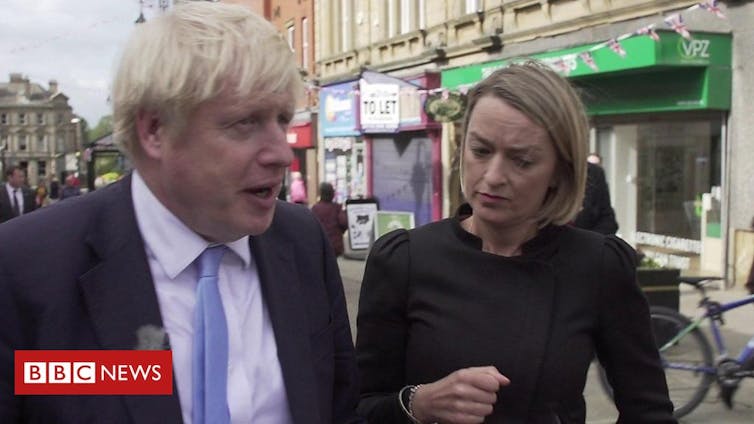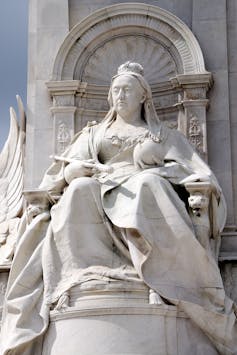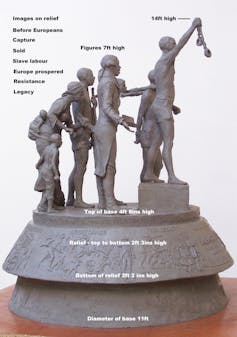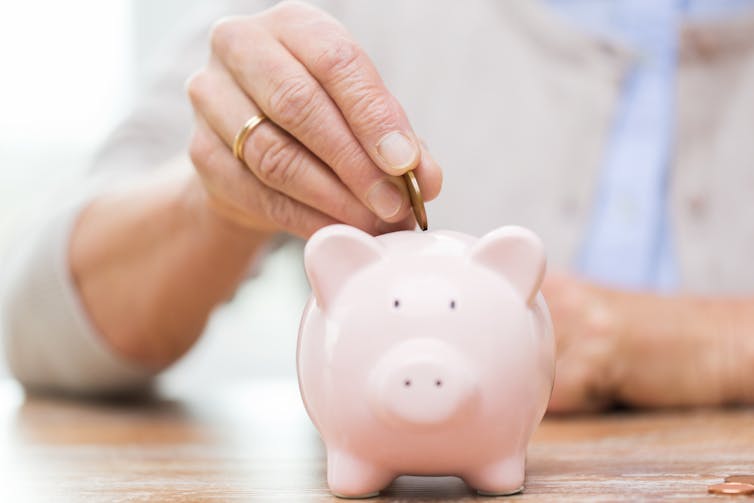
Stark naked? Not quite…
Shutterstock
Many people think they know their main language intimately. But there are many words and phrases in English that people often use wrongly. Whether these erroneous uses truly count as “wrong” is up for debate – after all, a mistake that has become widely adopted should really be considered acceptable. But whichever side of this argument you err towards, here are five examples of ones that we are all making.
1. Stark naked
Someone who has no clothes on is widely described as being stark naked. Originally, however, the phrase began as start naked – from the Old English steort, meaning “tail”. The phrase literally meant “naked to the tail”, probably referring to the buttocks.
Although the word steort is not recorded in this sense, tail has often been used in this way – as it still is in the American phrase work your tail off. The word steort fell out of general use around 1300, surviving only in the names of birds like redstart and wagstart (better known today as the wagtail).
The switch from start to stark naked was triggered by start becoming obsolete, combined with an association with stark, meaning “completely”, in phrases such as stark dead, stark blind and stark naught – first recorded in the early 16th century in the savage put-down: “Ye count your selfe wele lettred [educated], your lernyng is starke nought.”
2. Sneeze
The verb to sneeze is imitative in origin – the sound of the word mimics the sound of the thing it names, as with words like drip, fizz, beep and the noise created by a sneeze: atishoo.
But the original form of the word was fnese, along with fneosung (“sneezing”), and fnora (“a sneeze”). The change from fnese to sneeze arose through confusion caused by the way the word appeared in medieval manuscripts.
Medieval handwriting employed several different forms of the letter “s”, including an 8-shaped form, another resembling a kidney bean, the Greek letter sigma and a long form – still found in printed books of the 18th century. This last letter closely resembled the letter “f” and it was confusion between the long “s” and “f” that resulted in fnese being adapted into modern English sneeze.
Read more:
3. Gravy
While gravy may seem a quintessentially English sauce, the word is actually French in origin. Gravy was originally grané, meaning “spiced”, from Latin granum “grain”.
The letters “u” and “n” were often indistinguishable in medieval handwriting – both were formed using two single vertical strokes called minims – so that it would be easy for a scribe to misread the word as graue.
While the letters “u” and “v” are distinguished by the sounds they represent today, in medieval English they varied according to position: “v” appeared at the beginnings of words (vntil, “until”) and “u” in the middle (loue, “love”), irrespective of the sound. As a result, the word grané came to be misread as gravy, and this form has been used ever since.
4. Adder
Adder (the snake) goes back to the Old English word nædre; it is one of a small number of English words where the initial “n” has been lost due to confusion over where the boundary falls when following the indefinite article a/an.
As a result of this process, known as metanalysis, a nædre became an adder. The same misapprehension lies behind words like apron (from napron, related to nappe, “tablecloth”) and umpire (originally nonpeer, “no equal”).
The word orange was also formed this way, although in this case – since it is a borrowing into English from French – the mistake had occurred before it was adopted into English. The French orange is itself a borrowing of the Arabic word naranj (the initial “n” is still found in modern Spanish naranja); it was confusion following the indefinite article un that produced the modern form.

Watch your indefinite article.
Shutterstock
5. Cherry
The word cherry originates in the northern French dialect word cherise (a variant of the standard modern French cerise), which was adopted into English after the Norman Conquest of 1066.
Because it ended in an “s”, English speakers mistakenly understood it to be a plural form and so the false singular cherry was born. The same process lies behind the word pea, erroneously derived from the singular form pease (ultimately from Greek pison) – preserved in the nursery rhyme “pease pudding hot, pease pudding cold”.
Although these changes took place hundreds of years ago, the process can be observed today in the emergence of bicep: a singular form of biceps. This may seem logical, but biceps is an adoption of a singular Latin noun, from bi- “two” and -ceps “headed”, referring to a muscle with two points of attachment.
The tendency for speakers to associate the “s” ending with plurals has also given rise to erroneous plural forms. Despite phenomena being the plural of Greek phenomenon, the false plural phenomenas is sometimes used. But the error of this type that is most likely to make pedants reach for their red pens is paninis – the supposed plural of Italian panini (singular panino) – a reminder that what is acceptable for some remains anathema for others.
Simon Horobin, Professor of English Language and Literature, University of Oxford
This article is republished from The Conversation under a Creative Commons license. Read the original article.













